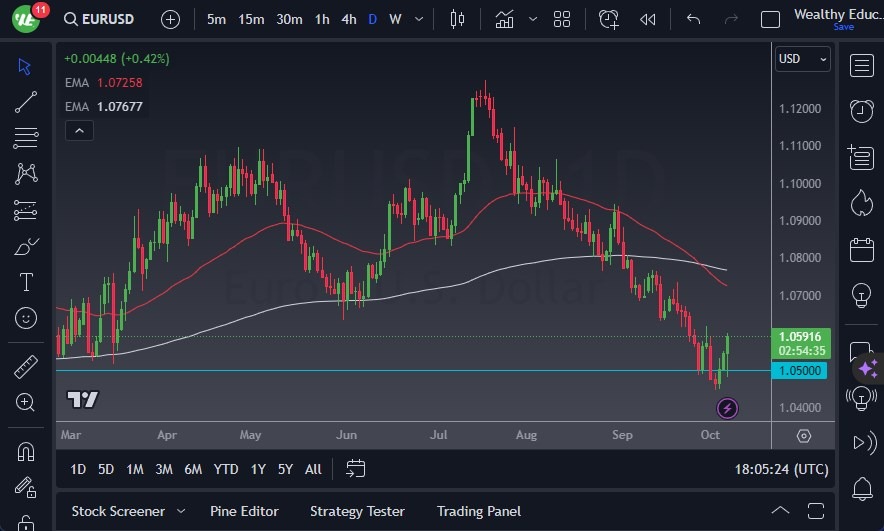- The EUR/USD started on Friday with an attempt to rally, only to falter, revealing signs of vulnerability yet again. This market appears somewhat oversold, and while it remains tumultuous, every rally presents an opportunity to take a position.
- The catalyst behind the euro's struggles lies in the persistently high interest rates in the United States, fueled by a surprisingly robust Non-Farm Payroll announcement that tripled expectations.
- Although some of these jobs were in the public sector, the prevailing trend suggests that the euro may face further headwinds. However, by the end of the session, the market turned around completely. This is what is known as a “max pain market.”
Top Forex Brokers
The pivotal point to watch is the breach of recent lows, which could potentially set the stage for a decline to the 1.0250 level and, ultimately, parity. Market sentiment often gravitates towards significant figures, and these levels have played crucial roles in the past. While rallies currently struggle to gain traction, the 1.07 level above presents additional resistance, marked by the presence of the 50-day Exponential Moving Average and structural barriers.
As the European Union appears to be heading into a recession more swiftly than the United States, it's plausible that the euro will continue to experience downward pressure. This economic divergence has prompted market participants to favor the US dollar over the euro, reflecting a broader trend that may persist.
The Euro Grapples With Ongoing Challenges
Volatility remains a dominant factor in this market, driven by the relentless influence of the bond market, which continues to impact various currencies negatively, except for the US dollar. This trend shows little sign of abating in the near future, underlining the appeal of seeking opportunities to buy the US dollar, not only against the euro but against multiple currencies.
Any significant shift in data or market dynamics may warrant reconsideration, but for now, the US dollar maintains a commanding position. The recent formation of the "death cross" in this pair, a longer-term technical signal, reinforces the bearish sentiment, providing further impetus for sellers.
In conclusion, the euro grapples with ongoing challenges in the face of a resilient US dollar. High US interest rates, economic disparities, and technical signals have combined to weigh down the euro. As volatility persists and the bond market exerts its influence, opportunities to buy the US dollar remain favorable. While market dynamics may evolve, the current landscape favors the greenback's strength in the foreseeable future.


